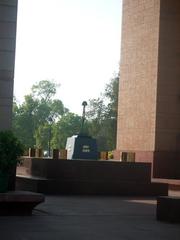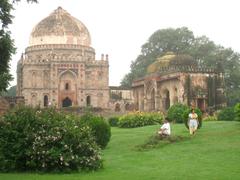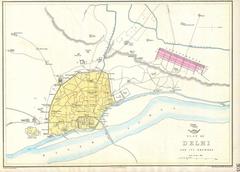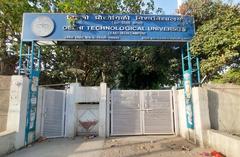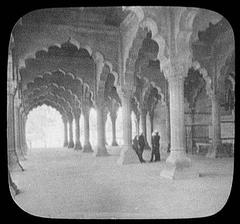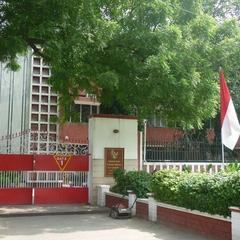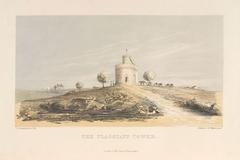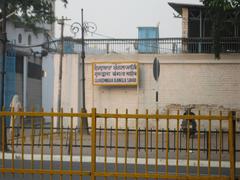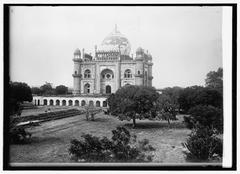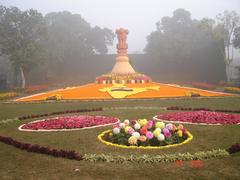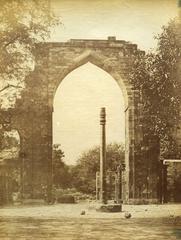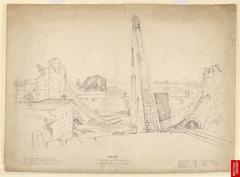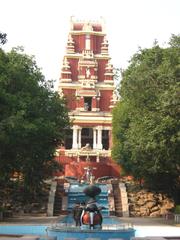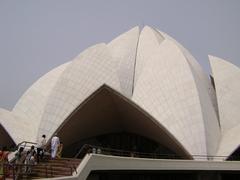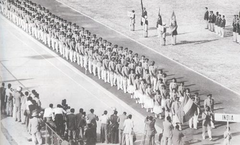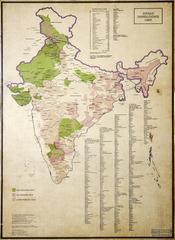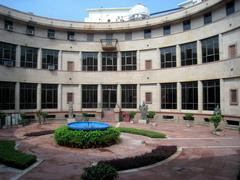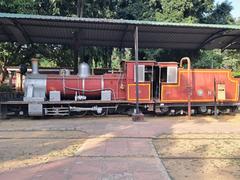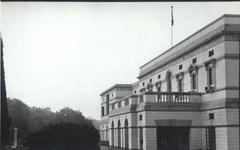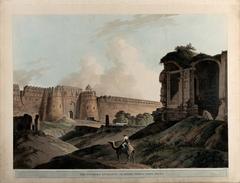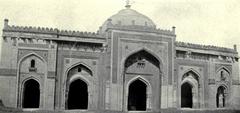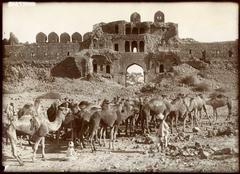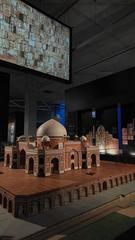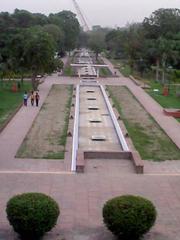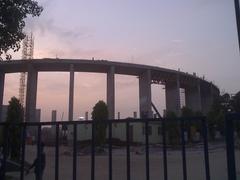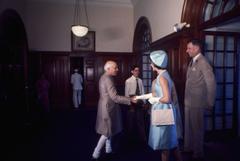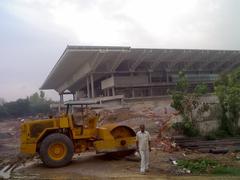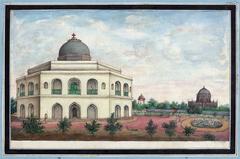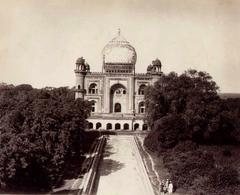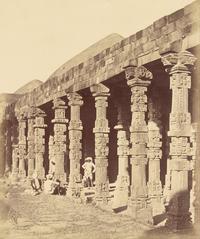Agrasen Ki Baoli: Visiting Hours, Tickets, and Comprehensive Guide to New Delhi’s Historical Stepwell
Date: 15/06/2025
Introduction
Agrasen Ki Baoli, tucked away in the bustling heart of New Delhi near Connaught Place, is one of India’s most intriguing historical sites. This ancient stepwell is a testament to the city’s layered history, blending striking medieval engineering with centuries-old legends, making it a must-visit for history enthusiasts, photographers, and cultural travelers. This guide provides detailed insights into the site’s history, architectural features, visiting hours, accessibility, and practical tips to enhance your experience (Delhi Messenger, Adventures of Jellie, Tripoto).
Historical Background and Cultural Significance
Mythical Origins and Historical Evolution
Agrasen Ki Baoli, sometimes called Ugrasen Ki Baoli, is shrouded in legend. Folklore credits King Agrasen, an ancient ruler and founder of the Agrawal community, with its original construction, possibly during the Mahabharata era. However, archaeological evidence suggests the current structure dates back to the 14th century, likely rebuilt under the Tughlaq or Lodi dynasties (Delhi Messenger). Despite the lack of definitive inscriptions, the baoli’s style is consistent with other medieval stepwells in North India.
Historically, stepwells like Agrasen Ki Baoli played a vital role in community life, acting as water reservoirs and social gathering spaces in the arid climate of Delhi (Adventures of Jellie). The baoli’s location near Connaught Place highlights its importance as a communal hub.
Architectural Features and Design
Layout and Dimensions
Agrasen Ki Baoli is a rectangular stepwell, approximately 60 meters long and 15 meters wide (Wikipedia, Incredible India). Its north-south orientation and sunken courtyard design create a peaceful retreat from the city above (Delhi Travel).
The Grand Staircase
The baoli’s defining feature is its grand staircase of 108 steps, divided into three tiers lined with arched niches and chambers (New Delhi Today). The precise symmetry and repetition of arches create a rhythmic, visually compelling space, making it a photographer’s delight.
Chambers, Arches, and Well
Pointed arched niches flank the staircase, historically serving as cool resting spaces or venues for rituals (TravelTriangle). At the base lies a deep, circular water reservoir, designed to store rainwater for year-round use (History Finder). The structure’s thick stone walls provide natural insulation, maintaining a cool atmosphere even during Delhi’s hottest months (Travellers Scribe).
Artistic and Religious Elements
The baoli features subtle ornamentation typical of the Tughlaq and Lodi eras, with the remains of a small mosque at the upper level (Incredible India). A narrow tunnel, now closed, adds a layer of intrigue.
Legends, Folklore, and Modern Mystique
Agrasen Ki Baoli is not just an architectural marvel but also a focal point of Delhi’s urban legends. Stories of hauntings, ghostly whispers, and chilling apparitions have become part of its mystique, especially after dusk (TripGuruGo). Tales of “black water” luring victims and echoes of colonial-era tragedies feed its supernatural reputation. Despite these tales, the baoli is safe to visit during daylight hours.
Visitor Information: Hours, Tickets, and Accessibility
Visiting Hours and Entry Fee
- Hours: Open daily from 9:00 AM to 5:30 PM, though some sources mention 7:00 AM to 6:00 PM depending on season and ASI regulations (Plan Ashley Go, TravelSetu).
- Entry Fee: Free for all visitors (Travejar).
How to Reach
- By Metro: Barakhamba Road (Blue Line) and Rajiv Chowk (Yellow/Blue Lines) are the nearest stations. A short walk leads you to the baoli (Plan Ashley Go).
- By Bus/Auto: Numerous buses and auto-rickshaws serve Connaught Place.
- By Car: Limited parking; public transport is recommended.
Accessibility
The baoli’s 100+ steep, uneven steps make descent challenging for visitors with mobility impairments. The upper platform is accessible, but there are no ramps or elevators.
On-Site Experience and Practical Tips
What to Expect
- Atmosphere: Descend into a tranquil, almost mystical environment. The interplay of light and shadow on the arches is especially striking in the morning and late afternoon.
- Activities: Photography, quiet contemplation, and exploration of architectural details are popular. The site is also a favorite for bird watching and picnics in the adjacent park.
Safety and Etiquette
- Children: Supervise closely due to the steep steps.
- Accessibility: Not suitable for wheelchairs or strollers.
- Respect: Avoid touching or defacing stonework; no littering.
- Photography: Allowed for personal use; professional shoots require ASI permission.
Facilities
- Restrooms: None on-site; available in Connaught Place.
- Food/Water: No vendors; carry your own.
- Guides: Local guides may be available at the entrance; negotiate fees in advance.
Nearby Attractions
- Jantar Mantar: 18th-century astronomical observatory, walking distance away.
- Connaught Place: Delhi’s commercial center with shops and restaurants.
- India Gate, Hanuman Mandir, and Rashtrapati Bhavan: Easily accessible for a full day of heritage exploration.
Agrasen Ki Baoli in Popular Culture
The baoli’s striking architecture has made it a favorite filming location for Bollywood movies like “PK,” “Sultan,” “Mom,” and “Raabta” (Tripoto). It is also featured in documentaries, literary works, and visual art, cementing its status as a cultural icon.
Preservation and Modern Relevance
Agrasen Ki Baoli is a protected monument under the Archaeological Survey of India, with ongoing conservation efforts to ensure its structural integrity and public access (Wikipedia). The baoli continues to attract a diverse audience, from history buffs and artists to casual tourists, serving as a living bridge between Delhi’s past and present.
Frequently Asked Questions (FAQs)
What are the visiting hours?
Open daily, typically 9:00 AM to 5:30 PM. Some sources mention 7:00 AM to 6:00 PM.
Is there an entry fee?
No, entry is free.
Is Agrasen Ki Baoli wheelchair accessible?
No, due to the steep steps and historic design.
Are guided tours available?
Local guides are often available at the entrance; heritage walks sometimes include the baoli.
Can I take photos?
Yes, for personal use. Professional shoots require permission.
When is the best time to visit?
October to March for pleasant weather; early morning or late afternoon for fewer crowds and better light (TravelSetu).
Key Visitor Tips
- Wear comfortable shoes for stair climbing.
- Carry water and sun protection.
- Avoid visiting during peak midday heat.
- Respect the monument and other visitors.
- Check for special events or heritage walks for a more informative experience.
Summary
Agrasen Ki Baoli stands as a serene and mysterious relic amid Delhi’s urban sprawl, offering visitors a blend of history, architecture, and legend. Its free entry, central location, and atmospheric charm make it one of the city’s most rewarding heritage sites. For an immersive experience, plan your visit during cooler months, consider a guided heritage walk, and take time to explore nearby attractions.
References and Further Reading
- Delhi Messenger
- Wikipedia
- Adventures of Jellie
- Plan Ashley Go
- Travejar
- Tripoto
- TravelSetu
- History Finder
- Incredible India
- Delhi Travel
- New Delhi Today
- TravelTriangle
- TripGuruGo
- Travellers Scribe
- Hungarian Dreamers
- The Delhi Tours
Plan Your Visit
For updated visiting hours, maps, and guided tours, download the Audiala app. Explore more of Delhi’s hidden gems and stay informed with our regularly updated travel content.


